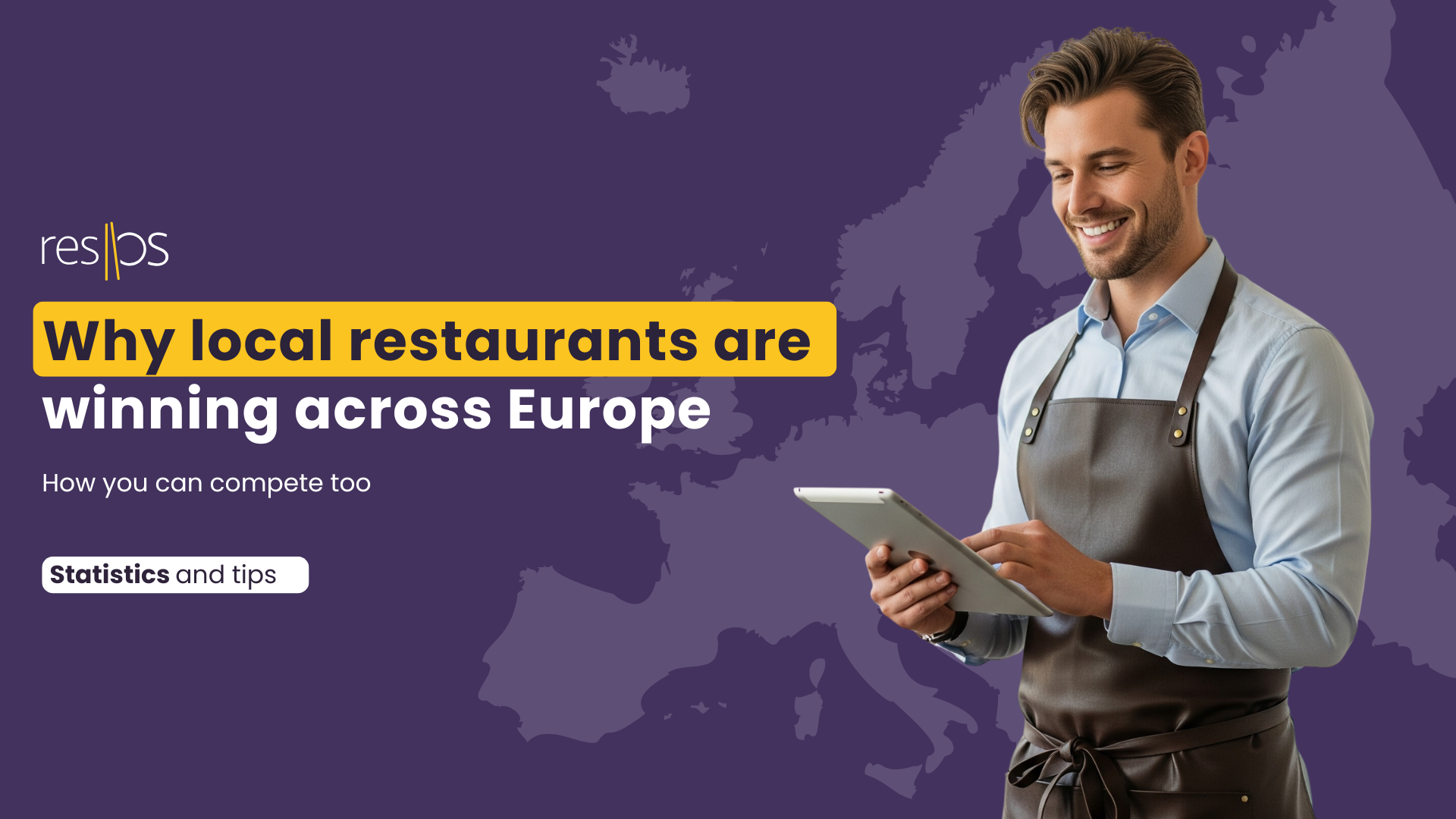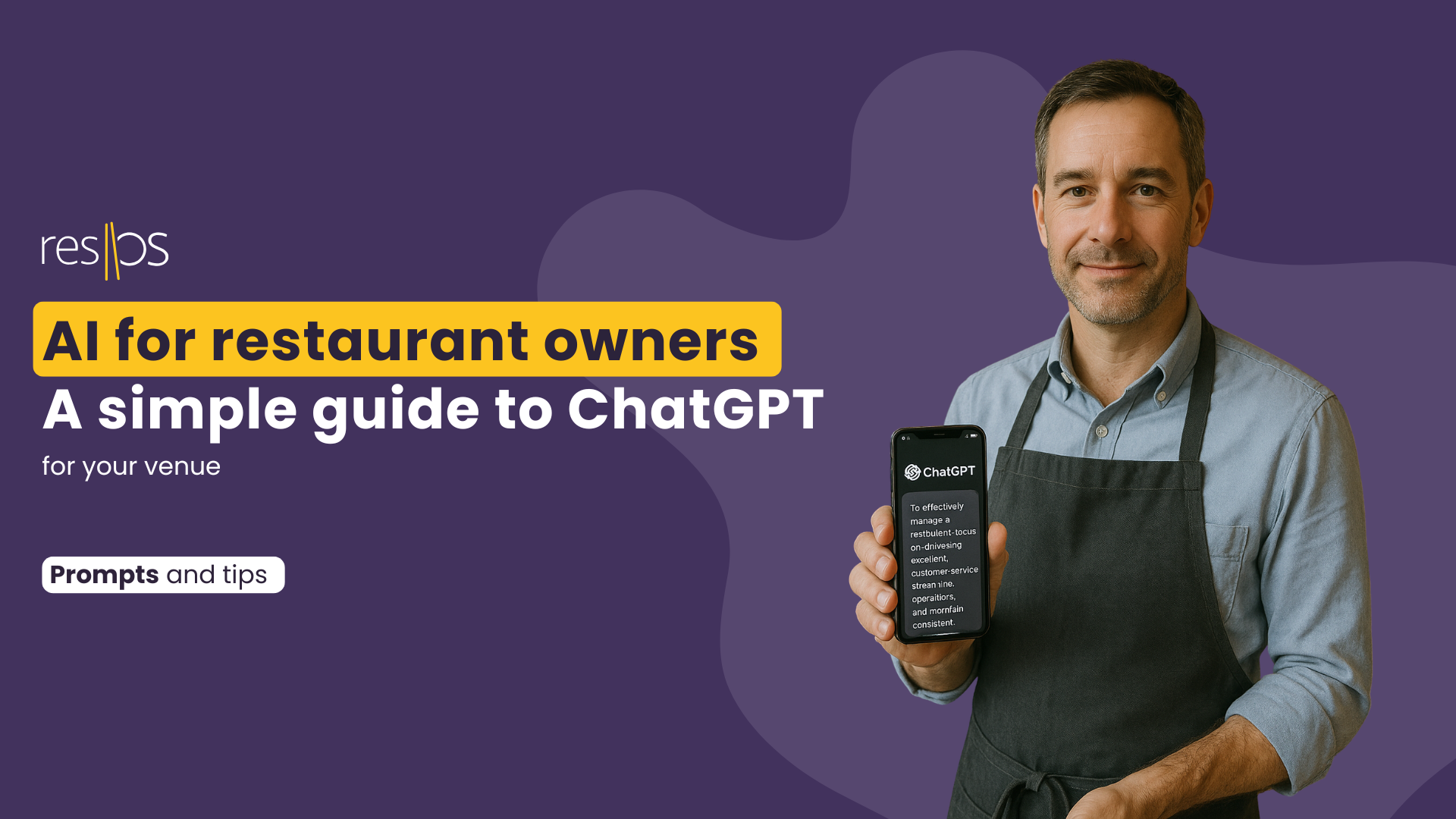This is the restaurant management for newbies guide – to those of you who’re starving for restaurant management skills. You don’t need a fancy degree in order to optimize your systems!
You may have just opened your restaurant, maybe you’ve had it for years, or maybe you’re the employee who makes sure that everything runs perfectly…
Whether you’re a restaurant owner, manager, waiter, trainee, staff, or know someone who works within this field, having a restaurant management system is key – key to an easier every day and a successful planning process.
So, do you want to improve your restaurant’s daily challenges such as managing reservations (online and offline), table seatings and planning, deposits, and prepayment systems? Then you’ve come to the right place.
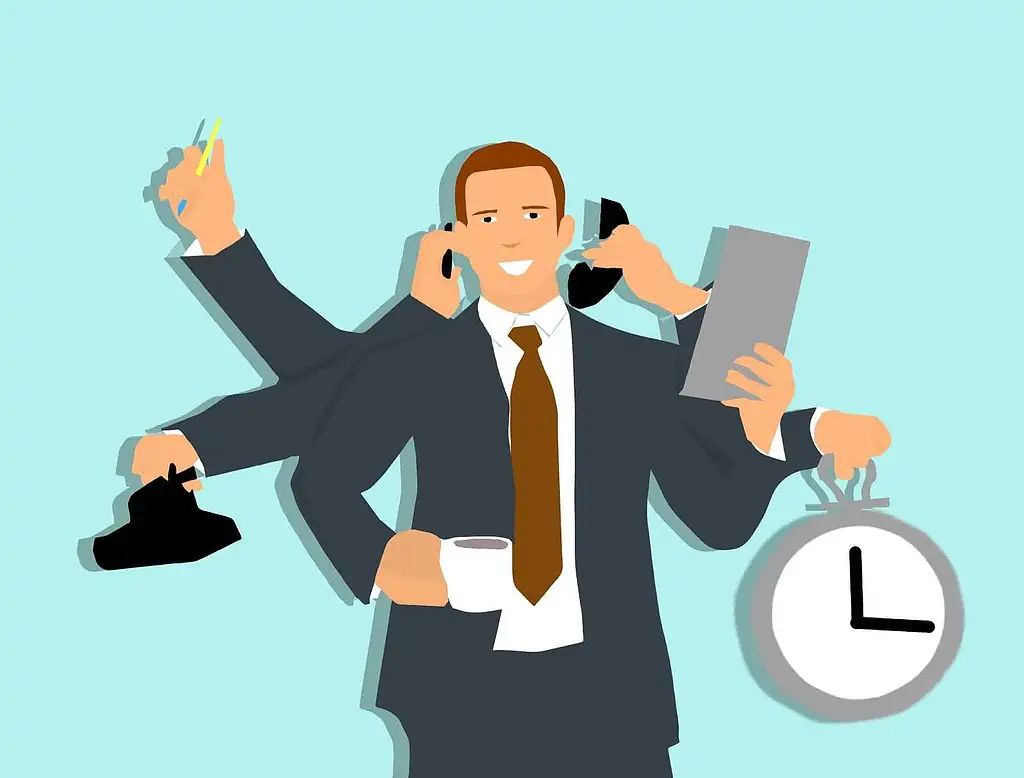
You might be spending a lot of time on back-end needs like managing table reservations and bookings online and manually, struggling with choosing the right settings for your restaurants’ deposit and prepayment systems, trying to optimize your table management tool, and trying to make sense of orders coming in.
Sometimes all you want is a restaurant management system that simplifies and eases the flow, so you can focus on what you’re actually good at or passionate about. This may involve your guests, food, drinks, the ambiance of the restaurant, bar, takeaway service, or all the other tasks that show up all of a sudden when you’re running a restaurant.
You need a system that is designed specifically to match your needs and that makes sense for your business and doesn’t take up unnecessary time, resources, and other expenses. Basically, a system that makes your day-to-day activities and planning easy, that is user-friendly and makes your everyday run smoothly.
Worry not. We’ve collected everything you need to know to handle restaurant management!
1. Know Your Restaurant’s Operating Costs
Opening a restaurant is definitely a big challenge – a lot of time and money is invested, which is why you need to have a good overview of how your money is spent. When running a restaurant you’ll have plenty of operating expenses and costs – and planning them requires improving processes, managing labor schedules, and controlling the restaurant’s costs.
The costs include fixed costs like rent, mortgage, salaries, loan payments, license fees, insurance, (and so on), and variable costs like food, hourly wages, and utilities and equipment. Of course costs and expenses vary depending on the type of restaurant, service, quality, locations, taxes, and unforeseen bills. In the restaurant industry, we promise with a 100% guarantee, that there’ll be many mean surprises that’ll cost you. Therefore, it is important to know the operating costs. When you understand how your money is spent, then you have an overview of the “health” of the business. Then you know how you can improve, control and influence it for the better.
2. So.. How do I manage my restaurant and make sure it’s profitable?

As we just talked about, your restaurant probably has a loooooot of operating costs.
Take a look at YOUR budget and monthly costs and expenses, and re-evaluate, adjust, and find out where you can save.
On average, the monthly cost of a restaurant is split up as follows:
- Rent & utilities: approx. 5-10%
- Rent, electricity, water, internet, cable, phone, management systems
- Marketing cost: approx. 10-20%
- Marketing and communications, SoMe, advertising, etc.
- Labor costs: approx. 30% of revenue
- Incl. management salaries 10%
- Food cost: approx. 25-40% of food sales
- Miscellaneous expenses: approx. 10-15%
- Things do break
There are ways you can save money and make your restaurant more effective.
Train your employees. It’s important to have an efficient team, who understand how your business works, understand the service standard, and have systems that make their work easier
3. Focus on your Staff and Customer Service

Ensuring that your staff continues to feel motivated and valued is often underestimated. Making sure to have a good work environment, where everyone is able to get advanced and grow professionally is very important.
Did you know that a restaurant employee on average only stays in the same place for less than two months?
Keeping the best employees, investing in them, motivating them, and ensuring that they stay matters.
At the end of the day, your employees are the engine to your car.
How do we make people feel like they are part of the team? Here are some examples of how to have happy staff:
- Rewards (gift cards, gifts, something that adds value)
- Bonus check
- Employee of the month
- Having open-book management with transparency and loyalty within the team
- Courses to educate staff
- Promoting, giving more responsibility/ tasks, etc.
- Staff activities, parties, team building
- Having easy and user-friendly systems that make tasks easier
4. How can you optimize the way you manage the restaurant’s guests in an easy and efficient way?
You want to have a clear overview of how many guests are dining at your restaurant, in order for you to be able to plan your days – how much staff do you need tonight? How much should be purchased beforehand? How much money can we expect to earn next week? Are we fully booked?
We suggest *drumroll* – a better and user-friendly restaurant management system. And what is that, you may think.. And what are the benefits of a restaurant management system?
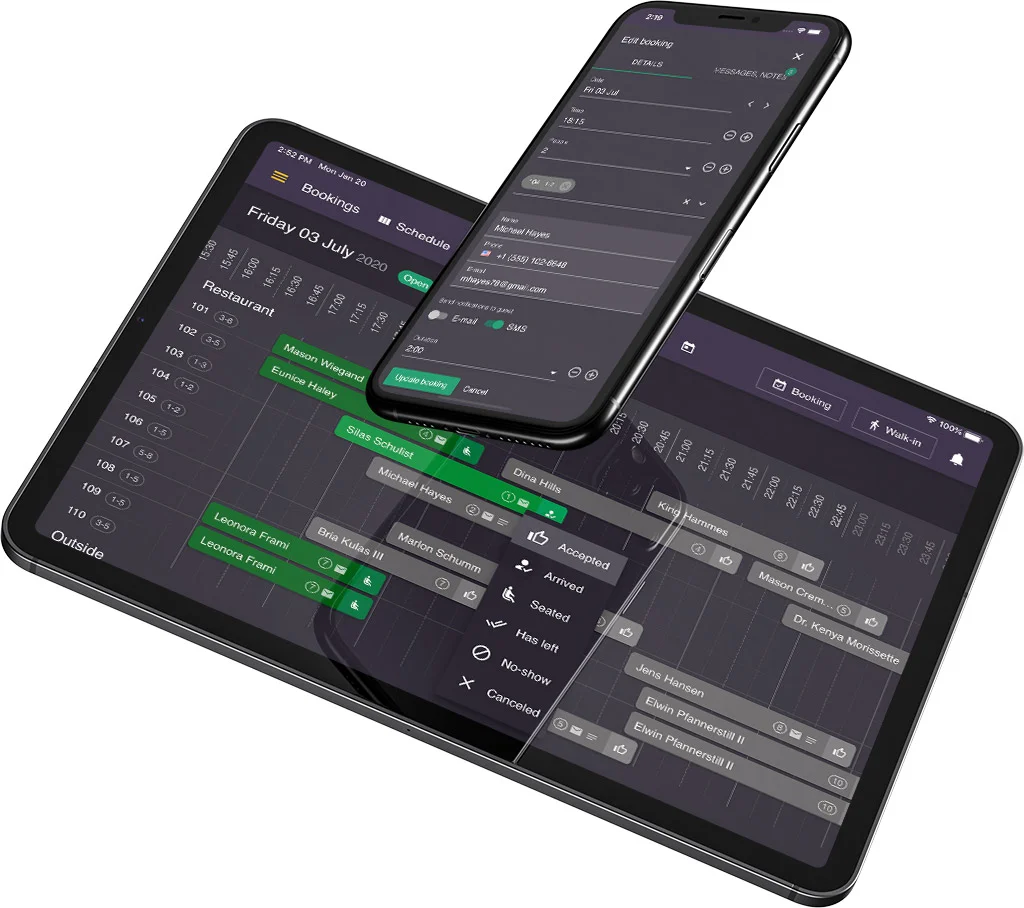
You want to create the best experience possible, and this starts even before your guests arrive. Did you know that:
- More than 90% of those who book a table at a restaurant wish to book online. That’s a lot!
- 35% will pick another restaurant if online booking isn’t an option.
This is why you need a restaurant management system that makes it easy for the guests to book. The process should be as simple as possible, both for your guests and your staff.
Many restaurants struggle with handling bookings because of difficult or non-existent systems. This also includes ‘the old-fashioned way of booking’, calling on the phone. Keeping up with the best restaurant management systems is everything.
5. Features your restaurant management system should have
Having a system with all these features really makes a difference. You will be able to minimize the number of no-showers, which in the long run means more stability and assurance that the guests that book actually will show up.
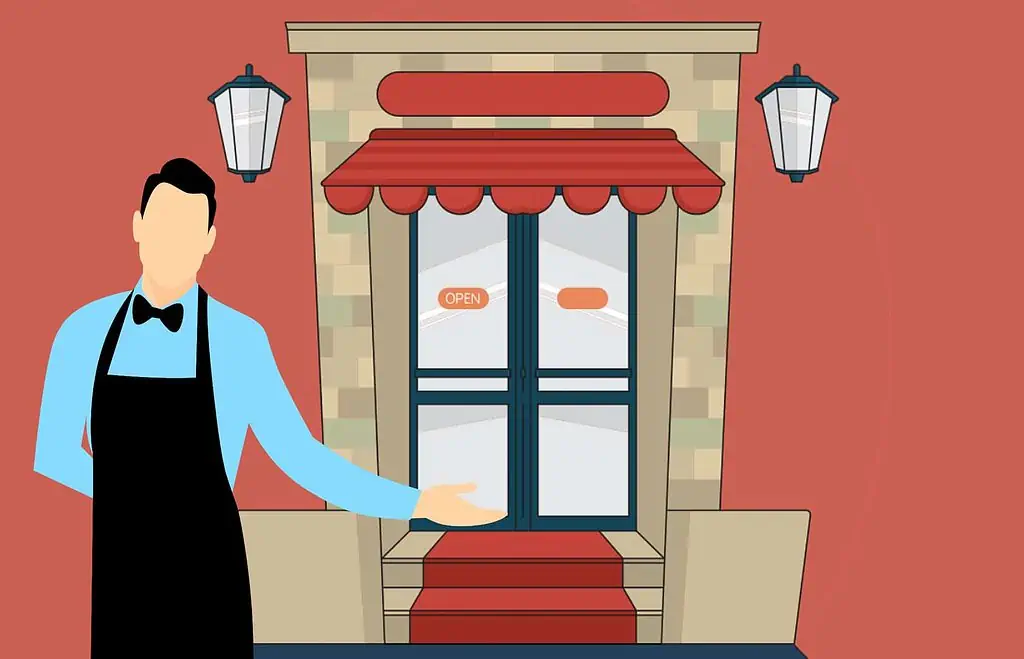
We want to see profit, not solely break-evens! You can manage takeaway options and customize the takeout menu, which also takes a lot of planning and management. Cable-free devices make it faster and easier for the staff to control the number of orders in the restaurant. You’ll be able to customize the app, e.g. the opening and closing hours, communicate better with guests, have a multilingual system for diversity, and use data for internal use, marketing, and SoMe.
- Charging a reservation deposit or prepayment – helps you with those guests who don’t show up… Having some type of security is essential.
- Reducing no-shows – keeping track of your ‘bad’ guests and being able to stop them from booking again will save you money.
- Keeping track of tables – a visual table planner makes it easier for your staff.
- Handling different seatings, staff breaks, and shift changes
- Manage reservations online – being able to create bookings, communicate with the guests.
- Reservation and orders via. app – making sure that the guests can book on iOS and Android wherever they are.
- Offering bookings through SMS, calls, and emails
- Offering bookings through your website, Facebook, and Google.
- Getting feedback and insights from guests – will help improve your restaurant based on what your customers desire.
- Tracking rations on Facebook, Google, TripAdvisor, and Yelp – this is where future guests will get a first impression of your restaurant.
- Easy communication with guests – avoid misunderstandings
- Manage reservations on computer, tablet, and smartphone – making it easy for everyone to work together
- You can get the systems for free –
- e.g. resOS where you can get a free version to test it out in your restaurant. resOS offers all the above-mentioned features and more, and the system can be customized to fit your needs, depending on your type of business/ restaurant.
We’ve collected these tips and tricks for you, trying to make it simple and edible for you:
- We suggest that you take a moment to look at how your restaurant’s economy and overall health are doing.
- What is going well, and what is not? Are you spending too much on back-end needs, too little somewhere that needs some extra love? There might be expenses and costs in your budget that can be readjusted. Tear off the patch!
- You should focus on your staff and how you can use their abilities in order to grow your business. See it as a long-term investment. Creating value for your employees and making sure everyone is motivated to make the days run more smoothly. They are the face to the public/customers – having a happy team is an acknowledgment and a sign that you’re doing something right. This will lead to better service and invite more customers in (hopefully!)
- Improve your Restaurant Management Systems. Make it easier for yourself, your employees, and guests to get a good experience. Understand what’s not working – this can be your restaurant management system. To find a system that will work for you, take a quick look at resOS.
- Could a new, improved, and customized restaurant management system help your business and staff in their day-to-day activities? Probably.
- Having a restaurant management system with features that your restaurant needs are key to being able to optimize your time, energy, and money.
- You’ll most likely experience that there will be fewer no-shows as your guests will be able to book a table and choose their seats as they like (on their phone, tablet, and computer) which lessens any potential complications. This leaves you with happier guests.
- You’ll be able to manage your staff and shifts in a more efficient way; tracking data about bookings, feedback, insights, and reviews on social media and internal sites.

Hopefully, you have learned a little more about how to better manage your restaurant, and have a newfound motivation to keep up the good work!


